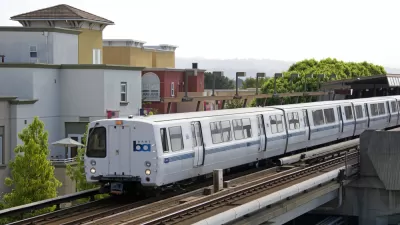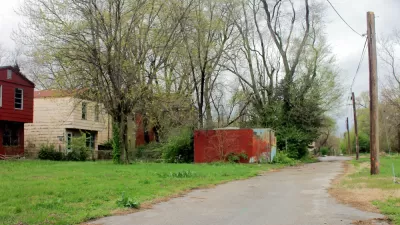A new report from City Observatory analyzes urban poverty and gentrification using census data from 1970 to 2010.
As Joe Cortright writes in Next City, City Observatory has created a new report analyzing the relationship between urban poverty and gentrification in American cities from 1970 to 2010. Specifically, the organization asked the question, “how many neighborhoods that used to have high rates of poverty have actually gentrified and how many people have actually been displaced by this new development?”
The results are found in the report titled, "Lost in Place: Why the persistence and spread of concentrated poverty–not gentrification–is our biggest urban challenge." Cortright summarizes some of the surprising findings, like how the hyper-gentrification of Williamsburg, for example, is rare throughout the country, as “[l]ess than 5 percent of 1970 high poverty neighborhoods have seen their poverty rates fall to below the national average over the past four decades. Far more common, and largely unnoticed, is a counter trend: the number of high-poverty neighborhoods in the U.S. has tripled, and the number of poor persons living in them has doubled since 1970. This growing concentration of poverty is the biggest problem confronting American cities.”
Cortright presents other findings from the report in his piece, like the deepening concentrations of poverty in neighborhoods and their population instability.
FULL STORY: More People in Cities Today Live in Poverty Than in 1970

Alabama: Trump Terminates Settlements for Black Communities Harmed By Raw Sewage
Trump deemed the landmark civil rights agreement “illegal DEI and environmental justice policy.”

Study: Maui’s Plan to Convert Vacation Rentals to Long-Term Housing Could Cause Nearly $1 Billion Economic Loss
The plan would reduce visitor accommodation by 25% resulting in 1,900 jobs lost.

Why Should We Subsidize Public Transportation?
Many public transit agencies face financial stress due to rising costs, declining fare revenue, and declining subsidies. Transit advocates must provide a strong business case for increasing public transit funding.

Paris Bike Boom Leads to Steep Drop in Air Pollution
The French city’s air quality has improved dramatically in the past 20 years, coinciding with a growth in cycling.

Why Housing Costs More to Build in California Than in Texas
Hard costs like labor and materials combined with ‘soft’ costs such as permitting make building in the San Francisco Bay Area almost three times as costly as in Texas cities.

San Diego County Sees a Rise in Urban Coyotes
San Diego County experiences a rise in urban coyotes, as sightings become prevalent throughout its urban neighbourhoods and surrounding areas.
Urban Design for Planners 1: Software Tools
This six-course series explores essential urban design concepts using open source software and equips planners with the tools they need to participate fully in the urban design process.
Planning for Universal Design
Learn the tools for implementing Universal Design in planning regulations.
Smith Gee Studio
Alamo Area Metropolitan Planning Organization
City of Santa Clarita
Institute for Housing and Urban Development Studies (IHS)
City of Grandview
Harvard GSD Executive Education
Toledo-Lucas County Plan Commissions
Salt Lake City
NYU Wagner Graduate School of Public Service




























